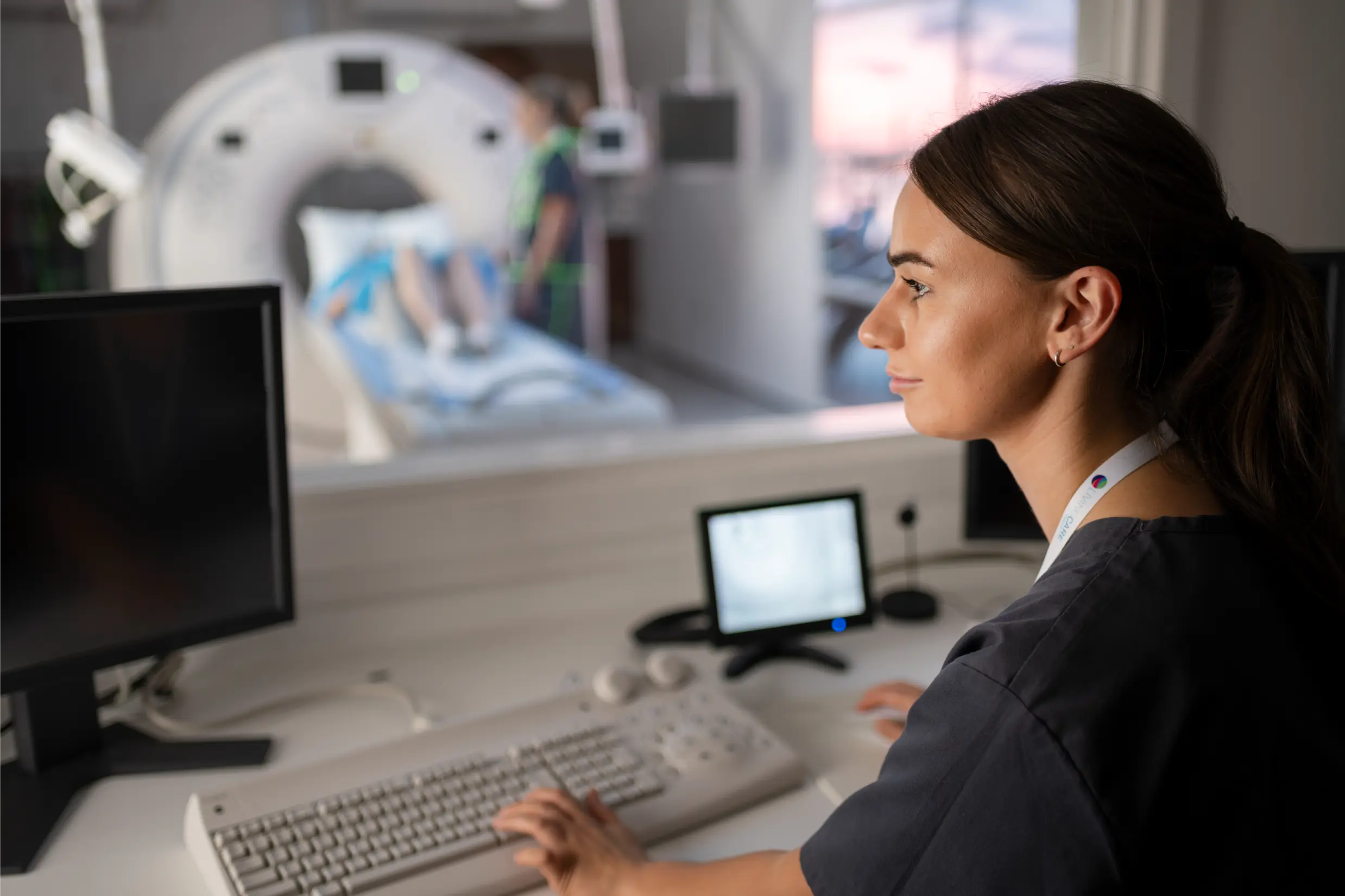Can Your Thyroid Affect Your Fertility? Here's What the Latest Research Says
Dec 10, 2025
Published on
10/11/2025


The LivingCare Group




How imaging supports diagnosis across specialities.
In May 2024, there were 1.88 million X-ray scans in the UK, making it the most common type of medical scan. Ultrasound followed this at 0.89 million, CT Scan at 0.64 million, and MRI at 0.37 million. While X-ray was the most common scan as a quick window into the body, especially in trauma cases, scanning is for more than broken bones. It is vital in diagnosing conditions across hospital departments, including orthopaedics, cardiology, gynaecology and gastroenterology.
At LivingCare, we understand the importance of a timely diagnosis – we also know waiting for scans and their results can be a worrying time. That's why we offer quick access to appointments in our Leeds and Sheffield clinics. If you are concerned about a problem or your GP has referred you for a scan, this article explains how MRI, CT scan, ultrasound and X-ray are used across specialities to support accurate, timely diagnosis.
An MRI scan uses a magnetic field and radio waves to take images of the inside of your body. The scan can see any part of your body to detect inflammation, tumours, diseases, bowel conditions and problems with ligaments, muscles and joints.
MRI scans are the HD of the scanning world and create a complete and detailed picture. You may have an MRI following a CT scan if the consultant has further questions about the diagnosis. If it is a cancer, MRI scans can show how deep the tumour is in the tissues. If you are in treatment for a condition, an MRI scan will show how well it is working.
An MRI is used to diagnose and monitor the following:
A GP may refer you for an MRI scan to diagnose a new condition, assess an injury, or see how a treatment is working. Consultants across departments use the scans, including oncology, gynaecology, neurology, orthopaedics and rheumatology.
MRI offers detailed images for consultants to visualise soft tissues, blood vessels and abnormalities. For a more accurate picture, MRI scans are often used in conjunction with other tests, such as further scanning, lumbar puncture, blood tests, mental ability tests and biopsies.
A CT scan takes 3D images of your organs, bones and blood vessels using X-ray beams. The scan can detect problems following trauma, such as internal bleeding and fractures. A CT can also be part of the picture when diagnosing cancer, diseases, brain conditions and joint conditions.
You may have a CT scan to diagnose a condition, monitor an ongoing condition or to guide a procedure.
A CT scan diagnoses and monitors:
Doctors may also use CT scans when planning surgery or to guide them during procedures, such as biopsies.
The scans are used throughout departments in the hospital, including orthopaedics, urology, neurology, gastroenterology, cardiology and oncology. A CT scan is often used in trauma cases as they are quicker than an MRI and can quickly show internal bleeding and assess injury.
A CT scan is a valuable part of the diagnosis process. The detailed images can be used alongside other testing, such as PET scans and MRI, to create a complete picture of the condition and to direct treatment.
An ultrasound scan is commonly known for its ability to show developing babies. However, with the scan's ability to show organs and blood flow, they are used as part of the diagnostic puzzle. They also enable consultants to visualise the inside of the body during procedures.
An ultrasound scan can diagnose and monitor the following:
You may have an ultrasound to help diagnose a condition, to monitor a condition or if you are having a biopsy or joint injection.
Departments across specialities use ultrasound scanning, including urology, gynaecology, cardiology, gastroenterology, rheumatology and endocrinology.
The images from an ultrasound scan are less detailed than CT or MRI scans. They will be able to see a mass, but wouldn't be able to determine if the mass is cancerous. Sound waves can't pass through bones or air, so ultrasound is most helpful for monitoring conditions or aiding diagnosis.
An X-ray uses electromagnetic radiation to show bones, dense tissues and foreign objects. X-rays are often used following a trauma as they are quick and easy to access. However, they don't show internal bleeding like a CT scan.
X-rays are commonly used for:
A radiographer will examine the X-ray picture and identify the issue. They may request further tests, such as an MRI or CT scan, for more detailed images.
While the hospital department with the X-ray machine is radiology, other departments use the scan, including orthopaedics, oncology, dentistry, respiratory medicine, and gastroenterology.
X-rays are used as a diagnostic tool for some cancers: lung and breast cancer, for instance. But while they can help visualise abnormalities in the body, you would likely need advanced imaging such as MRI and CT scans for a more definitive diagnosis, alongside further tests. X-rays give a clear picture of dental problems, broken bones, and foreign objects; in these cases, the consultant may not require additional tests.
At LivingCare, we know spotting signs of treatable and manageable diseases saves lives. Diagnosing cancer when it isn't too large or hasn't spread makes treatment more likely to be a success. But scanning isn't just for diagnosing cancers. It is for detecting heart disease, identifying blood clots, diagnosing and monitoring multiple sclerosis, checking musculoskeletal problems and more.
Our experienced consultants identify which scan you will need, and use our top-of-the-range scanning equipment to create images of the inside of your body. Consultants can refer you for further tests to develop an accurate picture of your diagnosis or to help them direct treatment.
We understand that waiting for scans and results is a worrying time. That's why we offer easy access to appointments, whether you're self-funding or using insurance.
